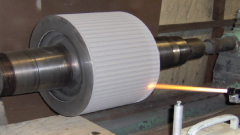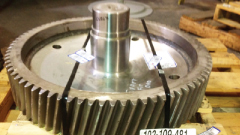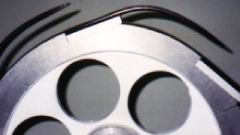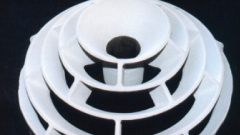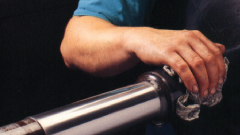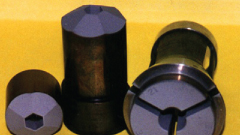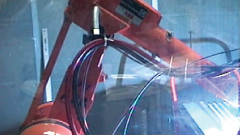WEAR RESISTANT COATINGS
PROTECT AGAINST ABRASION, EROSION, CORROSION, FRETTING/GALLING, CAVITATION, BRINELLING.
REPAIR COATINGS
NO NEED TO SCRAP AN EXPENSIVE PART. REPAIR OR BUILD UP TO A SPECIFIED SIZE. EXTEND PART LIFE.
RELEASE COATINGS
FEATURING DURA-SLIK™ FLUOROPOLYMER COMBINED WITH THERMAL SPRAYED COATING PROVIDES WEAR RESISTANCE ALONG WITH RELEASE PROPERTIES.
THERMAL BARRIER PROTECTION COATINGS
RESISTS TEMPERATURES UP TO 3000° F. ALLOWS THE USE OF LESS EXPENSIVE SUBSTRATE.
LOW COEFFICIENTOF FRICTION COATINGS
COATED COMPONENTS HAVE THE ABILITY TO PERFORM AT HIGHER SPEEDS.
SURFACE TRACTION COATINGS
Long lasting surface finishes that prevent slippage, interruptions & breaks. Improves web tracking and tension control.
BRUSH PLATING
Repair or rebuild to a specified size, tolerance and surface finish. Plate an entire surface or target a small localized area.
GENERAL CAPABILITIES
Services, coating features, part size capability.
Variations of Electroless Nickel Plating
Electroless nickel plating, also referred to as chemical or autocatalytic nickel plating serves as a viable alternative to standard electro nickel plating. In contrast to electro nickel plating, electroless nickel (EN) plating doesn’t rely on an electric current to apply nickel coating. Alternatively, a chemical reaction generally known as catalytic reduction deposits a layer of nickel-phosphorous alloy. Distinct percentages of phosphorous present within the alloy provide special metallurgical properties.
What Are Electrolytic and Electroless Nickel Plating?
Conventional electrolytic nickel plating needs a catalyst plus a direct existing (DC) charge to start a chemical chain reaction to coat an object (the substrate) having a thin layer of nickel-however, with electroless nickel plating, no catalyst or charge is necessary. As an alternative, electroless formulas involve a chemical lowering agent (phosphorous) that permits the user to coat the substrate without the need for further processing.
Each solution adds a thin layer of nickel towards the target surface, but electroless nickel plating (ENP) gives further wear- and corrosion-resistance, lubricity, and ancillary overall performance qualities when compared with its electrolytic counterpart. Also known as autocatalytic coating, ENP is usually utilized on projects with tight tolerance specifications and is easy to apply in uniform layers.
Electrolytic nickel plating, however, is generally thicker about the substrate corners and edges and cannot deliver the same amount of precision. Through electrolytic plating, deposit density is controlled by the length of time the product is submerged and how a lot of amps per square foot are applied.
Why Electroless Nickel Plating (ENP) is Better than Electrolytics Plating?
Electroless nickel plating provides crucial rewards over standard electrolytic plating because of the truth that the electroless deposits are formed without the need of the will need of externally applied electrical existing. This results in deposits that happen to be totally free in the edge buildup of the dog-bone effect popular with electrolytic plating. Also, the nickel/phosphorous alloy composition provides enhanced hardness, lubricity, and corrosion resistance over that of classic electrolytic nickels and can be heat treated to modify as-plated properties.
The Procedure Of Adding An Electroless Nickel (ENP)
The method of adding an electroless nickel plating to a metal surface is definitely an autocatalytic chemical reduction. This implies that as an alternative to making use of an outside supply of electrical energy like inside the comparable electroplating approach, the electroless nickel plating process makes use of a chemical bath to deposit a nickel / phosphorous layer onto the metallic surface. A surface coated in electroless nickel can even be used on non-conductive surfaces which allows for plating of a wider variety of base materials. This electroless method considerably improves the resistance of the object to galling and leaves a predictable, uniform nickel coating for high-precision components, which is often applied to both ferrous and non-ferrous surfaces of any geometry or intricate shape.

